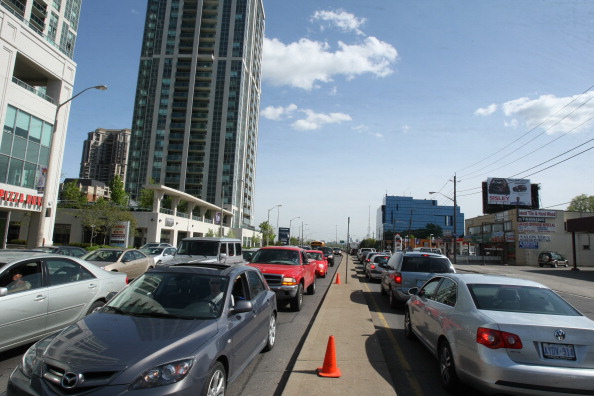WATCH: (May 14, 2014) Commuting times are getting longer. And it’s only going to get worse if we don’t do something about it. Health officials are warning we will have more health problems if we don’t fix it. Carey Marsden reports.

TORONTO – Health officials say we need to invest in public transit because our health depends on it.
That was the message from medical officers of health in the Greater Toronto-Hamilton Area (GTHA) Wednesday morning at Union Station.
“We’ll have lower rates of obesity, lower rates of diabetes,” says Dr. David McKeown, the Medical Officer of Health for Toronto Public Health.
“We’ll prevent what is a looming concern as the population of the greater Toronto area grows. We’re going to have a lot more health problems if we don’t fix this.”
In a new report entitled “Improving Health by Design in the Greater Toronto-Hamilton Area” medical officers say traffic-related air pollution is estimated to cause between 712 to 997 premature deaths each year.
According to their findings, the population in the GTHA is expected to grow by another 2.2 million people over the next 20 years. That’s equivalent to the populations of Montreal and Vancouver moving into the GTHA.
“This really is the big public health concern of our time,” says Dr. David Mowat, Medical Officer of Health for Peel Region Public Health.
The report outlines the difference in commute times. In 2006, the average commute time was 82 minutes. Fast forward to 2031: officials say that commute time will increase to 109 minutes if we don’t see changes.

Public transit is a big issue for both the provincial and municipal elections. The health officials say it’s important to also look at how our communities are designed and to create more “walk-able communities.”
“We know that if we build communities so that they’re compact, so that it’s easy for people to get to school, to get to work, get to shops by walking or cycling. If we have good public transit systems then we will be much more physically active in our day to day lives.” McKeown said.
That statement echoes what Jennifer Kessmaat, Chief Planner for the City of Toronto, said in an interview with Global News last month.
Kessmaat said, “We can make linear neighbourhoods in those places where we are investing transit. And thereby increasing the choice for people to live in mid-density neighbourhoods with a variety of different options for how they move from place to place.”

Construction is underway for the Eglinton Rail. When completed, it will provide 19 kilometres of light rail transit.
“Transit really provides an opportunity to make great places,” Kessmaat said.
“By adding mid-rise, by widening sidewalks, by adding street trees.”
Health officials say if we improve transportation and transit in the GTHA and community infrastructure, we will see the benefits.
According to the report, increased physical activity and reduced air pollution will prevent 330 premature deaths a year.
- ‘She gets to be 10’: Ontario child’s heart donated to girl the same age
- Bird flu risk to humans an ‘enormous concern,’ WHO says. Here’s what to know
- Buzz kill? Gen Z less interested in coffee than older Canadians, survey shows
- Canada updating sperm donor screening criteria for men who have sex with men



Comments